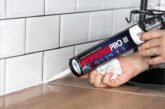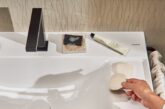
Martin Walker, CEO of Methven, explores the role tradespeople can play in improving the overall water efficiency of their bathroom projects.
In 1960, around 85 litres of water were used per person, per day. Fast forward to 2022 and this figure is around 150 litres and rising. As the UK continues to face significant water scarcity, and homeowners shift towards environmentally friendly solutions, tradespeople now need to futureproof a property against upcoming changes, without compromising on performance or aesthetics.
Sustainability and being more environmentally conscious have been on the agenda for many years, with manufacturers looking for ways in which they can help create energy efficient solutions. However, while the spotlight remains on carbon reduction, water sustainability is often an area that is overlooked. It is vital that water efficiency is addressed because there are genuine concerns that the UK is set to face severe shortages over the next 20 years. As a result, the Environment Agency is urging people to reduce their water consumption by 40 litres or more.
There is a desire from homeowners to be more environmentally conscious, with 79 per cent of consumers saying they would likely fit a water saving device, according to research by the Consumer Council for Water. As bathrooms account for the majority of daily water usage in residential homes, builders can help by taking a proactive approach in the products being specified to not only future-proof properties but also protect the UK’s diminishing water supply.
Historically, some water efficient showerheads, particularly the white plastic, entry level models, have gained a negative reputation for low performance and compromising the overall bathroom aesthetic. In recent years, the industry has begun to develop a new generation of low flow showers and, while some of these products may have significantly reduced the flow rate of water used per minute, the overall function was so limited that individuals had to shower for up to twice as long, resulting in the same level of water usage as a normal showerhead.
Here at Methven, we have invested in water saving technologies and have put a great emphasis on creating stylish and modern products that don’t compromise on performance. Our designs offer a high quality and visually appealing showering experience so there is no compromise on the final look of the bathroom.
In order to prove that a property, extension or conversion is water efficient, Part G Water Calculations are now a legal requirement. This means a home must not use more than 125 litres of water per person per day. Once you factor in high water usage items such as dishwashers and washing machines the figures really add up. In water stressed areas a standard of 110 litres PPPD is in place, and it is widely anticipated that this requirement will be adopted under Building Regulations. Therefore, choosing solutions that adhere to this ‘optional’ requirement to achieve water efficiency can ensure the property is future proofed and proactively helps homeowners to reduce their usage.
Methven offers a range of technologies that provide low flow rates and focuses on harnessing the natural power of water, rather than adding unnecessary pumps and components. These include Satinjet, Aurajet and Vjet shower spray technologies, which maximise each individual droplet of water to make contact with the skin in the most effective way. Spray patterns are crucial to the showering experience and Methven’s technologies are designed to provide more coverage than a conventional shower.
The patented designs can save up to 50 per cent on energy costs and up to 55 per cent on the cost of water used in the shower. For a family of four this could equate to over £200 off their utility bills annually. Methven has taken a different approach from many other manufacturers by engineering the spray experience based on a desired, limited flow rate whilst maximising the user experience.
For further information please visit: www.methven.com/uk







